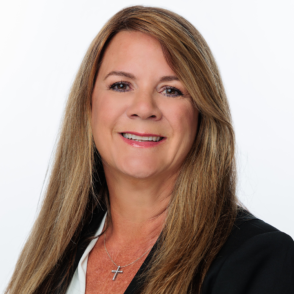The price of crude oil last year reached negative territory, exacerbated by a drop in the price of West Texas Intermediate crude of 300 percent to around negative $37 per barrel in April 2020.The challenges tied to the pandemic created a market we had not seen in decades, forcing many smaller businesses to shutter operations.
The good news is that we have seen significant recoveries in 2021. Crude prices have risen to their highest levels since 2018 and revenue projections for the full year are expected to be close to the pre-pandemic levels of 2019, helped by pent-up demand for leisure and business travel. However, there are still market forces threatening a full recovery to those levels.
At Burns & Wilcox, our team of professionals is staying abreast of the trends most significantly impacting the energy sector. Renewables, rates, compliance, and auto related coverage remain opportunities and/or issues we are following and will impact the direction of the market in the months ahead.
The recovery has started
Upstream operators (generally described as exploration and extraction businesses) saw an increase of 4,300 jobs in March 2021 alone and 12,000 jobs since September 2020. Jet fuel demand is rising significantly, and OPEC and Russia continue to constrain their supply to inflate retail prices.
One reason oil prices turned negative last year was that companies were running out of places to store it. In standard markets there is little interest and no profitability in storing crude oil for weeks or months at a time. Fortunately, there is enough demand where oil is selling quickly again, which offers opportunities for the market.
Rates are rising
We are witnessing consistent rate increases in all sectors of the oil and gas field. The “midstream” increases, or rates impacting companies transporting oil and gas (railways, tanker, and barge companies for example) is more significant. And the “downstream” companies (those that produce raw materials that are refined for energy consumption) have been even more significantly impacted, with double-digit rates across the board.
Excess policies have been particularly challenging. Admitted carriers and E&S carriers are reducing capacity. Not only are minimum premiums being raised, but underwriting guidelines are tightening. Most clients need to answer several underwriter questions in a way that paints a positive individual profile before coverage is extended. It is an environment where underwriters can afford to be choosy.
The premiums from the London market have fluctuated over the past year, and compliance remains problematic – all because of a lack of capacity. Four years ago, it was common for clients to get approval for a $20 million umbrella policy with little to no carrier pushback. Now, the best they may be offered is a much smaller general liability limit. Despite this the London markets are recovering as offices have reopened, allowing for more consultative services despite market pressures like anti-indemnity statutes.
A variety of factors, namely large storms and lightning strikes caused a significant number of claims to be filed in South Texas for commercial auto policies within the energy sector. Companies will have to take these costs into consideration as part of their overall insurance profile.
Renewables and solar
The general outlook for the renewables market is very positive in 2021. Consumers are expanding the share of the market and new solar and “green” companies are being created every day. It represents a big portion of the industry’s future because of market forces and governmental, consumer and environmental social pressures. There is little question that proactive efforts to preserve fossil fuels is an irreversible trend. However, this does present an opportunity for traditional energy companies, and therefore insurance brokers. Large and many mid-size oil and gas companies have the infrastructure, workforce, and geographic presence to invest in renewable options while securing some benefits by acting socially responsible.
There is significant variability happening in solar where some markets have seen a high number of claims while others have not. The variance can include rates that are two to four times higher depending on risk profiles, geographic location and more. Coverage can be broadened, and rates lowered depending on the market. In addition to solar, there is increased interest in policies relating to wind, geothermal and biofuel/biogas providers, providing more opportunities for brokers to provide services.
Even with the opportunities available for renewables there are challenges to write policies with the necessary limits. In some instances, we have found that submitting to environmental markets and adding pollution liability offered cost-effective benefits on core liability policies. It takes creative solutions, utilizing relationships and working with different carriers to find affordable rates to fill coverage gaps.
Portfolio growth remains possible
This market is providing opportunities to expand your portfolio in the energy sector. We have mentioned pollution, with sudden and accidental coverage being available and desirable for many clients. Those types of coverage may have vastly different terms and conditions as well while discovery and reporting periods may also change.
Professional liability is another area of potential growth for brokers, with 5,000 energy operators listed just in the state of Texas. Every one of those companies, even the small ones, need coverage. So do many operators that have come back online in 2021. There is a need for brokers to help clients fill out their towers as well.
Brokers should become comfortable with contractual requirements. It is incumbent upon them to know market capabilities. By getting creative, you can find ways to sweeten the deal and make a new client a long-term one.
The Energy team at Burns & Wilcox can help you provide proven, creative options to support your needs.
Contributor(s): Gina Jones, Vice President, Director, Environmental Programs, Burns & Wilcox; Brad Nehring, Director, Energy, RB Jones, Marine & Energy; Alex Krcmarik, Senior Broker, Environmental, Burns & Wilcox
This commentary is intended to provide a general overview of the issues contained herein and is not intended, nor should it be construed, to provide legal or regulatory advice or guidance. If you have questions or issues of a specific nature, you should consult with your own risk, legal, and compliance teams.







